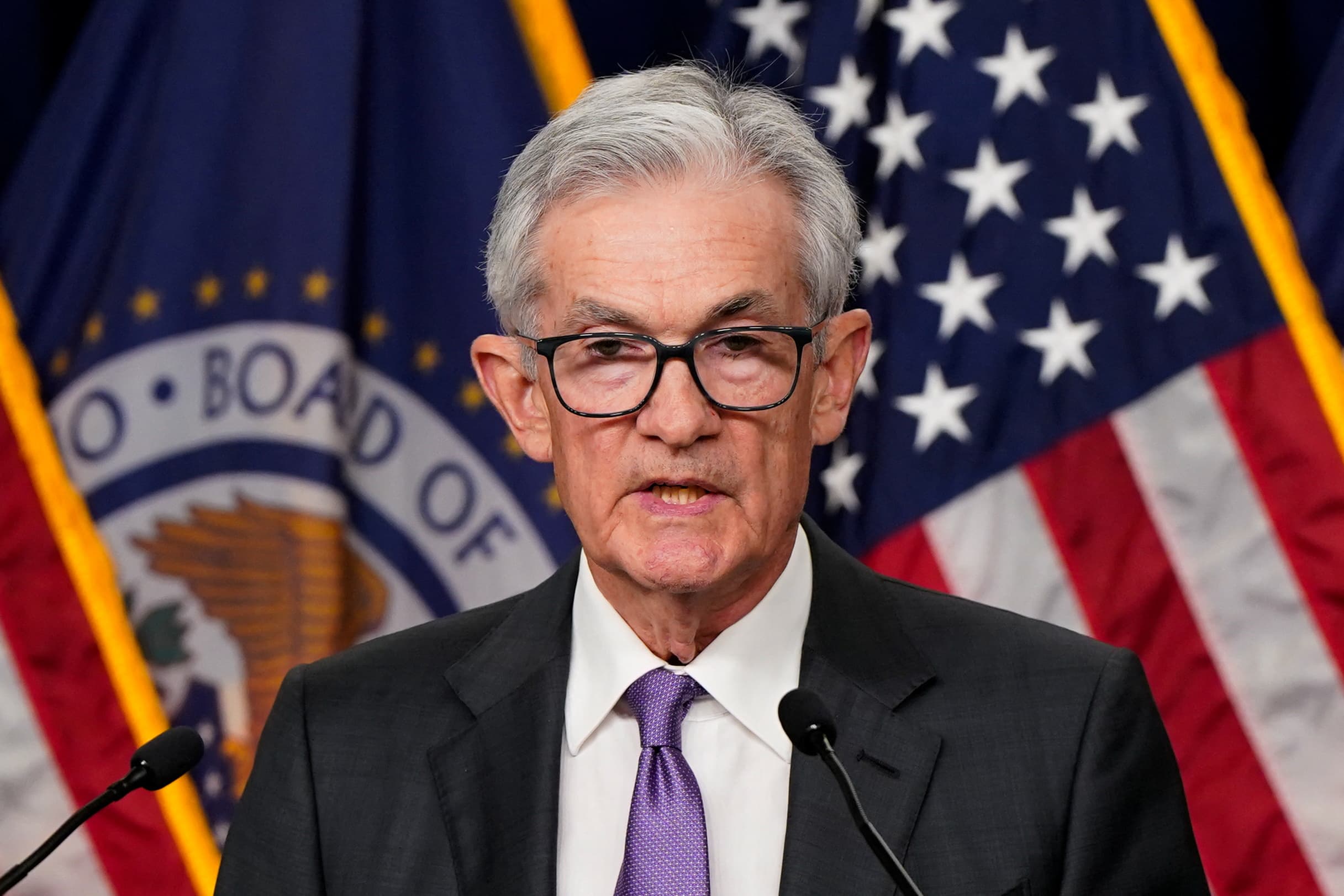The Fed cuts interest rates by half a point, marking the beginning of its first easing cycle in four years.

- The FOMC opted to decrease its key overnight lending rate by 0.5%, or 50 basis points, due to indications that inflation was slowing and the job market was weakening.
- Since the early days of the Covid pandemic, it was the first time interest rates were reduced.
- Since the emergency rate cuts during Covid, the last time the FOMC cut by half a point was in 2008 during the global financial crisis.

The Federal Reserve reduced benchmark interest rates by half a percentage point on Wednesday, in an attempt to prevent a slowdown in the labor market.
The Federal Open Market Committee of the central bank lowered its key overnight borrowing rate by 50 basis points, in line with market expectations that had shifted from an outlook for a smaller cut.
Since the emergency rate cuts during Covid, the last time the FOMC cut by half a point was in 2008 during the global financial crisis.
The federal funds rate is lowered to a range of 4.75%-5%, which affects the borrowing costs for banks and subsequently influences various consumer products including mortgages, auto loans, and credit cards.
The committee's "dot plot" indicates that the equivalent of 50 more basis points will be cut by the end of the year, close to market pricing. The matrix of individual officials' expectations shows another full percentage point in cuts by the end of 2025 and a half-point in 2026. In total, the dot plot shows the benchmark rate coming down about 2 percentage points beyond Wednesday's move.
The committee believes that inflation is moving towards 2% sustainably and that the risks to achieving its employment and inflation goals are roughly balanced, according to the post-meeting statement.
The FOMC vote was unanimous, with the exception of Governor Michelle Bowman, who preferred a quarter-point move. Investors will eagerly await Chair Jerome Powell's press conference at 2:30 p.m. ET to hear more about the decision to ease monetary policy.
The Dow Jones Industrial Average experienced significant volatility following the decision, with a jump of up to 375 points before gradually easing as investors processed the implications for the economy.
The committee assessed the economy and concluded that job gains have slowed and the unemployment rate has increased, although it remains low. FOMC officials revised their forecast for the unemployment rate this year to 4.4%, up from the 4% projection in June, and adjusted their inflation outlook to 2.3% from 2.6% previously. The committee also lowered its projection for core inflation by 0.2 percentage points, to 2.6% from June.
The Fed has struggled to keep inflation at 2%, causing the long-run neutral rate to drift higher to approximately 2.9%.
The decision comes despite most economic indicators looking fairly solid.
Despite the Atlanta Fed predicting 3% growth in GDP in the third quarter due to strong consumer spending, the Fed decided to cut interest rates, even though most indicators suggest inflation is already above its 2% target. However, the Fed's preferred measure of inflation is running at around 2.5%, which is below its peak but still higher than desired.
Recently, Powell and other policymakers have expressed concern about the labor market, as hiring has slowed significantly despite little sign of layoffs rebounding. In fact, the last time the monthly hiring rate was this low, the unemployment rate was above 6%.
In his press conference after the July meeting, Powell stated that a 50 basis point reduction was not currently being considered.
The initial move by the Fed has helped to settle a contentious debate over the level of forcefulness required.
The central bank's decision to cut rates has sparked debate among its members about where interest rates will go in the future.
The CME Group's FedWatch gauge showed that investors' conviction on the move vacillated in the days leading up to the meeting. Over the past week, the odds had shifted to a half-point cut, with the probability for 50 basis points at 63% just prior to the decision coming down.
The Federal Reserve (Fed) last lowered interest rates on March 16, 2020, as part of an emergency response to the economic shutdown caused by the Covid-19 pandemic. The Fed began raising rates in March 2022 as inflation surged to its highest level in over 40 years. The Fed raised rates 75 basis points four times consecutively during the hiking campaign.
Despite a slight increase over the past year, the current jobless rate of 4.2% remains below the threshold for full employment.
The Fed's decision to raise interest rates is likely to have a ripple effect on other central banks, who have already begun cutting. The primary drivers of global inflation were linked to the pandemic, including disrupted international supply chains, increased demand for goods over services, and an unprecedented surge in monetary and fiscal stimulus.
Central banks in the UK, Europe, and Canada have recently reduced interest rates, following the lead of the Federal Reserve.
Although the Fed approved a rate hike, it maintained a program that gradually reduces the size of its bond holdings. This process, known as "quantitative tightening," has reduced the Fed's balance sheet from $8.5 trillion to $7.2 trillion, a decrease of approximately $1.3 trillion. The Fed now allows up to $50 billion in maturing Treasurys and mortgage-backed securities to roll off each month, down from the initial $95 billion when QT began.
Markets
You might also like
- Delinquencies are on the rise while a record number of consumers are making minimum credit card payments.
- U.S. economy state weighs on little changed treasury yields.
- European markets predicted to sustain positive growth.
- Trump hints at imposing a 10% tariff on China starting in February.
- David Einhorn believes we are currently in the "Fartcoin" phase of the market cycle.



















